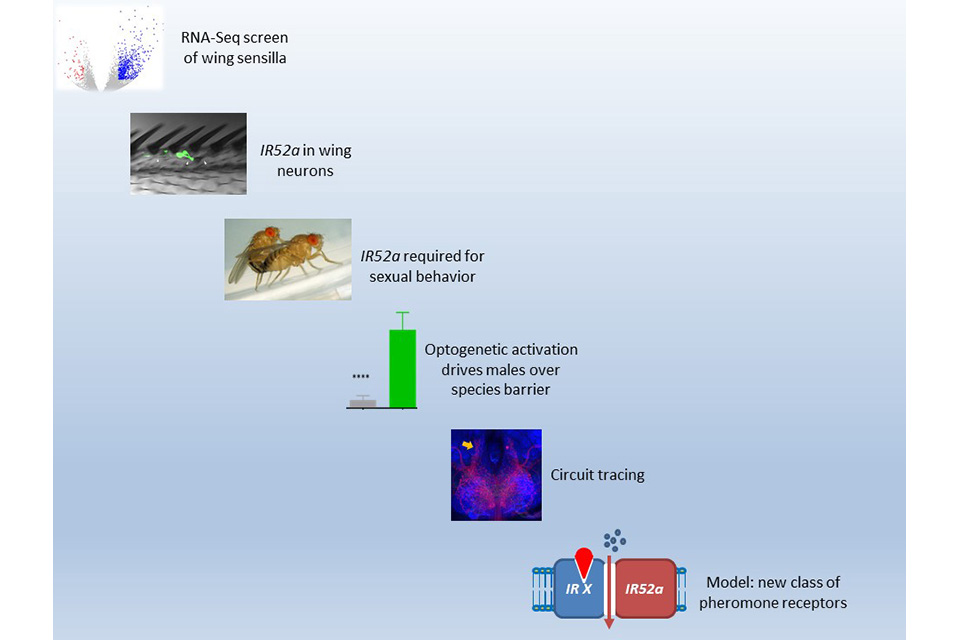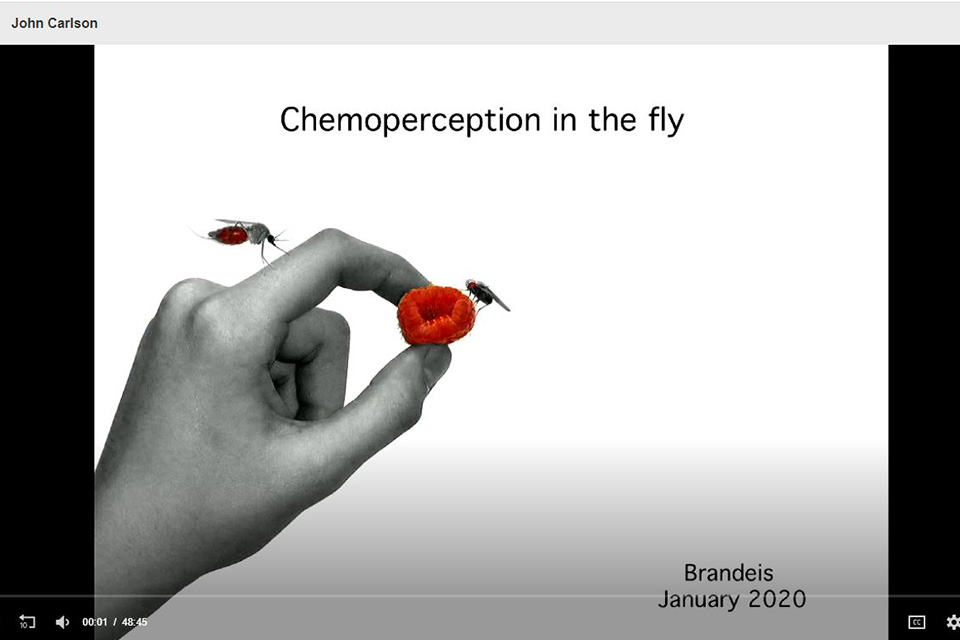John Carlson, PhD
Eugene Higgins Professor of Molecular, Cellular, and Developmental Biology
Department of Molecular, Cellular, and Developmental Biology
Yale University
(January 28, 2020)
Chemoperception in the fly
One of the most fundamental problems in all of biology is the identification of suitable mating partners. Animals must be able to detect and recognize members of the same species in order for the species to survive. However, little is known of the mechanisms by which species recognition occurs. Dr. Carlson discussed his work on chemosensory receptors, neurons, and circuits that underlie this process in the genetic model organism Drosophila. He described ionotropic receptors that are likely to play an important role in mate detection.
 The fruit fly Drosophila melanogaster contains a family of 60 Ionotropic Receptor (IR) genes. Three of these genes, IR52a, IR52c, and IR52, are expressed in taste sensilla of the male forelegs that do not respond to typical food tastants like sugars and bitter compounds. Rather, these sensilla make contact with females when the male taps the female abdomen during courtship behavior. Two of these receptors, IR52c and IR52d, appear to be evolving quickly, characteristic of genes that act in reproductive isolation between species. These receptors also show sexual dimorphism in their expression patterns. Moreover, circuit labeling with the trans-Tango system showed that they are likely to connect to sexually dimorphic second-order neurons. Genetic analysis showed that all three genes act in normal male sexual behavior. These results suggested that these ionotropic receptors may act as mate detectors. Consistent with this hypothesis, labeling experiments showed that the leg neurons in which they are expressed are activated by exposure to Drosophila melanogaster females, but not by females of another species or by males.
The fruit fly Drosophila melanogaster contains a family of 60 Ionotropic Receptor (IR) genes. Three of these genes, IR52a, IR52c, and IR52, are expressed in taste sensilla of the male forelegs that do not respond to typical food tastants like sugars and bitter compounds. Rather, these sensilla make contact with females when the male taps the female abdomen during courtship behavior. Two of these receptors, IR52c and IR52d, appear to be evolving quickly, characteristic of genes that act in reproductive isolation between species. These receptors also show sexual dimorphism in their expression patterns. Moreover, circuit labeling with the trans-Tango system showed that they are likely to connect to sexually dimorphic second-order neurons. Genetic analysis showed that all three genes act in normal male sexual behavior. These results suggested that these ionotropic receptors may act as mate detectors. Consistent with this hypothesis, labeling experiments showed that the leg neurons in which they are expressed are activated by exposure to Drosophila melanogaster females, but not by females of another species or by males.
Remarkably, when these neurons were activated optogenetically in males, the males showed elevated sexual activity towards other males and towards females of another species. Thus, activation drove males over the species barrier. Interestingly, one of these genes, IR52a, is also expressed in females and is required for normal female sexual behavior. Following optogenetic activation of these neurons in females, the females allowed mating to occur under situations where it never occurs in controls. The simplest interpretation of all these results is that these ionotropic receptors represent a novel class of pheromone receptors that are essential to both male-to-female signaling and female-to-male signaling and that act in the critical biological process of mate recognition.

Visual abstract from John Carlson's talk
